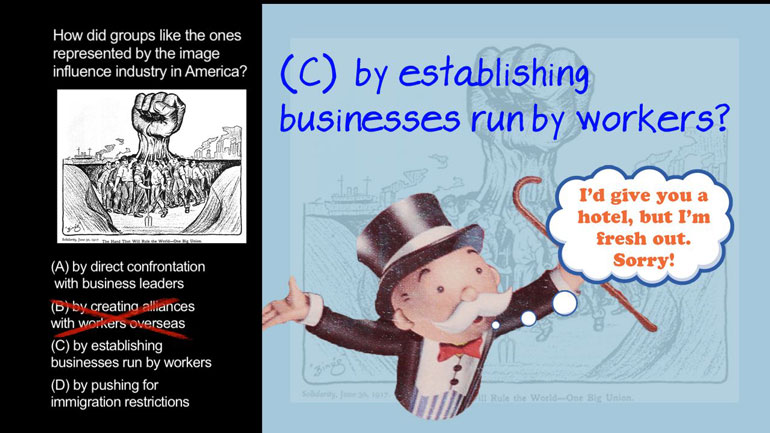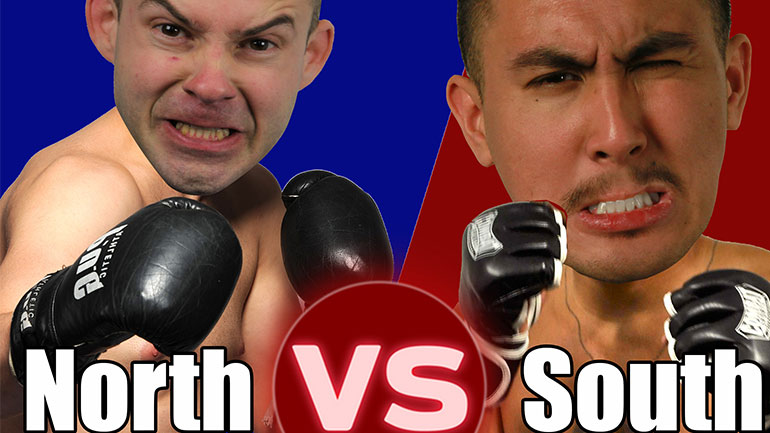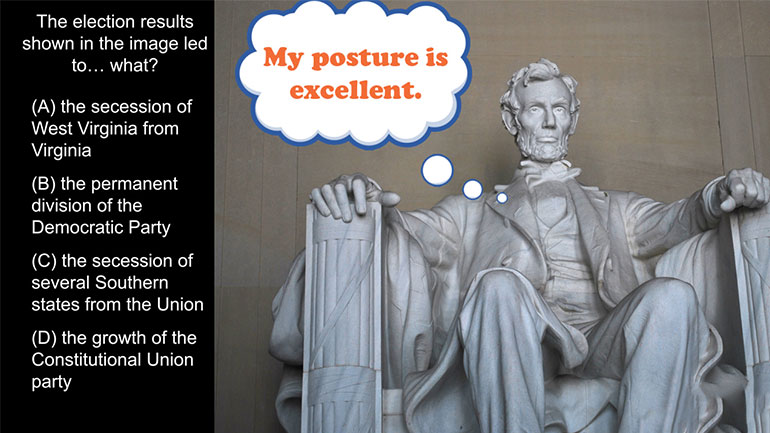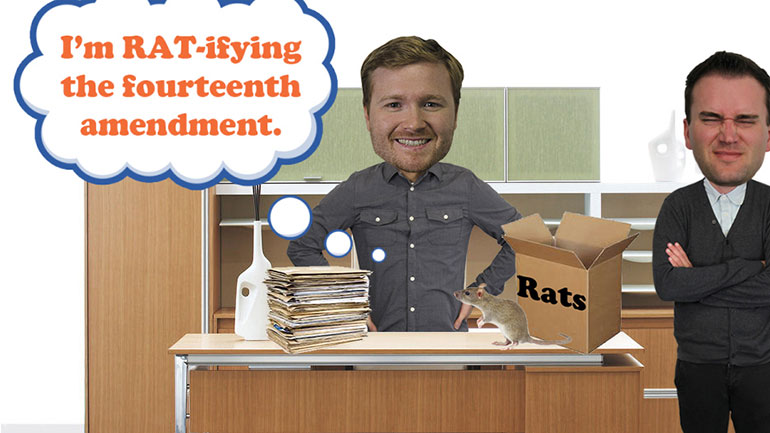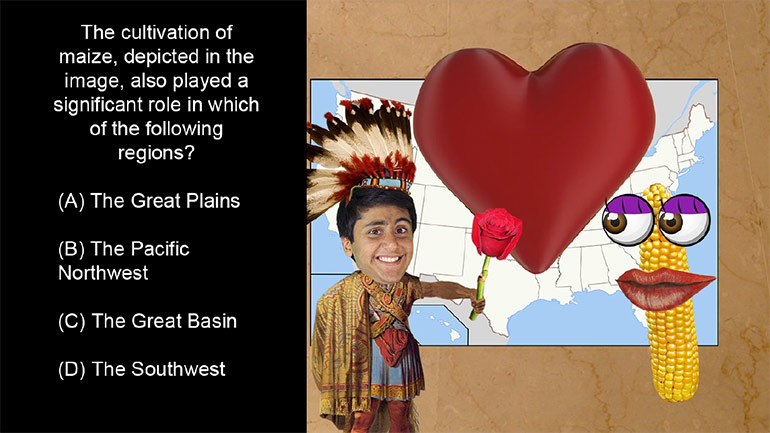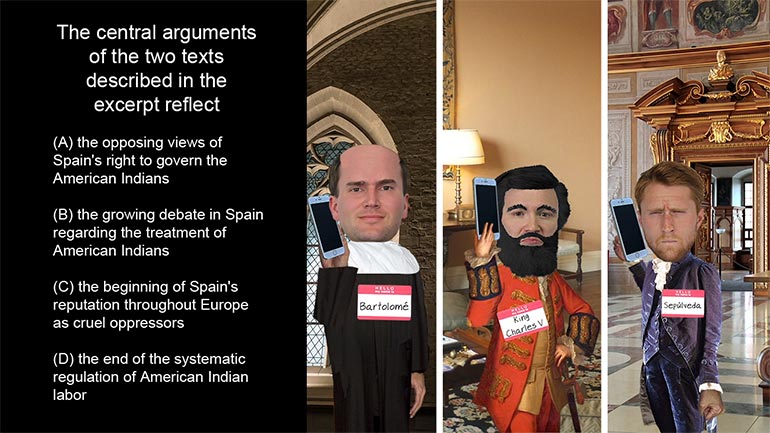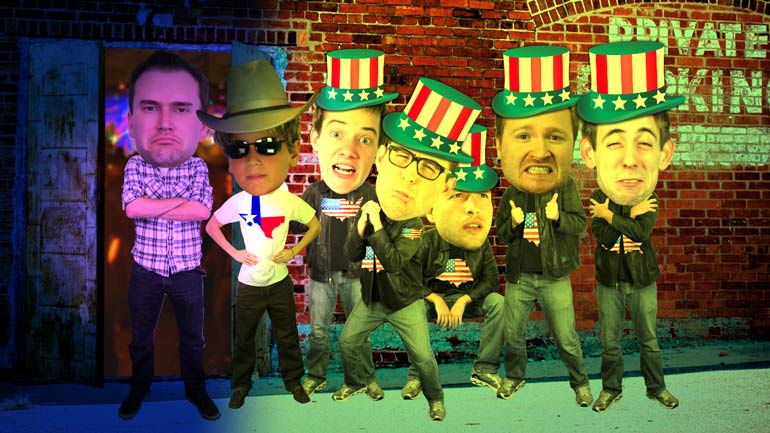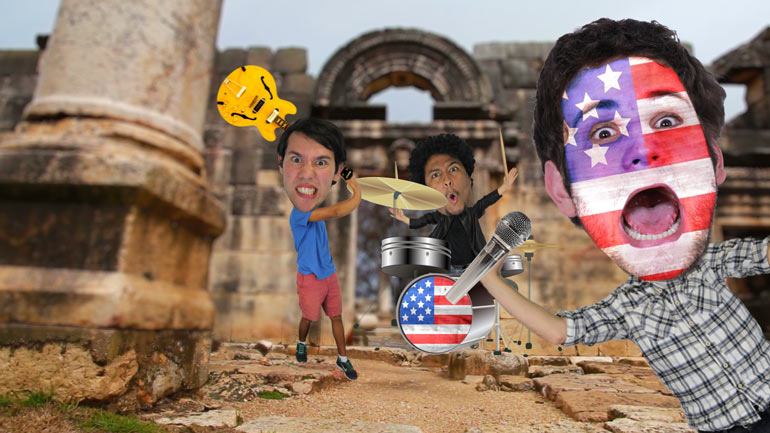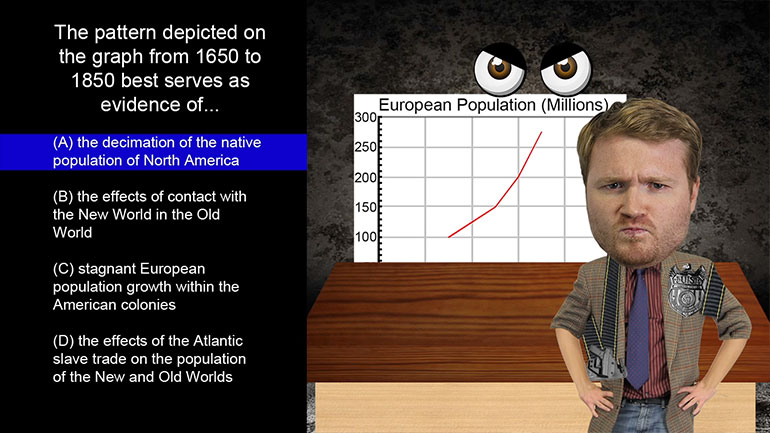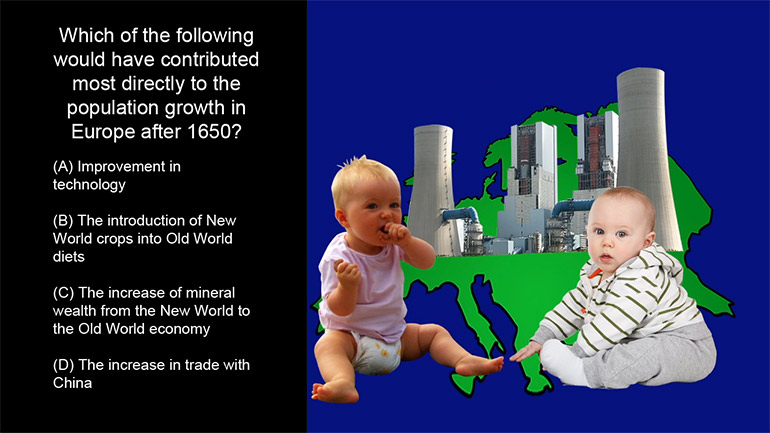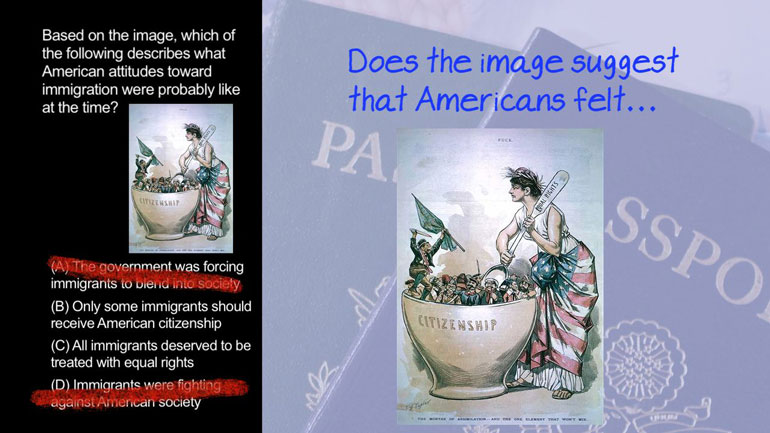ShmoopTube
Where Monty Python meets your 10th grade teacher.
Search Thousands of Shmoop Videos
AP U.S. History Videos
Play All
AP U.S. History 3.1 Period 2: 1607-1754. Which of the following contributed most directly to the process seen in the image?
AP U.S. History 3.3 Period 2: 1607-1754. The direct effect of the process depicted in the image was...what?
AP U.S. History 3.4 Period 2: 1607-1754. The description in the excerpt most directly reflects what?
AP U.S. History 4.1 Period 2: 1607-1754. The Gustavus Vasa except reflects what?
For us at Shmoop, dramatic change means eating something other than a bologna sandwich, 4 carrots, and a juice box for lunch. Taco Tuesday is a big...
AP U.S. History Diagnostic 15. How did groups like the ones represented by the image influence industry in America?
AP U.S. History Diagnostic 10. What led to the splintering of the political parties shown in the image?
AP U.S. History Diagnostic 11. The election results shown in the image led to...what?
AP U.S. History Diagnostic 12. How did the Reconstruction Acts open up political opportunities for former slaves?
AP U.S. History Period 1: 1491-1607 Drill 3, Problem 2. The cultivation of maize, depicted in the image, also played a significant role in which of...
AP U.S. History 3.2 Period 4: 1800-1848. The goals presented in the excerpt have the most in common with which of the following?
AP U.S. History 3.3 Period 1: 1491-1607. The central arguments of the two texts described in the excerpt reflect...what?
AP U.S. History 3.3 Period 4: 1800-1848. Which of the following best describes the public reaction to movements like the one described in the excer...
AP U.S. History 3.5 Period 5: 1848-1877. The Emancipation Proclamation was a continuance of which of the following developments?
AP U.S. History 4.1 Period 4: 1800-1848. Which of the following contributed most directly to the development described in the excerpt?
AP U.S. History 4.2 Period 4: 1800-1848. One direct effect of the trend described in the excerpt was...what?
AP U.S. History 4.3 Period 1: 1491-1607. The pattern depicted on the graph from 1650 to 1850 best served as evidence of what?
AP U.S. History 4.3 Period 4: 1800-1848. The development described in the excerpt has the most in common with which of the following?
AP U.S. History 4.4 Period 1: 1491-1607. Which of the following would have contributed most directly to the population growth in Europe after 1650?
AP U.S. History Diagnostic 1. Relationships like the one shown in the image resulted in the development of...what?
AP U.S. History Diagnostic 13. Why did the Reconstruction Acts fail to change Southern attitudes toward race?
Take a look at the photo in this video and see if you can figure out what the American attitude towards immigration was at the time.
Hint: the answer is not "Americans wanted to cook all immigrants". We weren't founded as a nation of cannibals. That's your bonus lesson of the day.
AP U.S. History Diagnostic 17. How did immigrants approach the situation shown in the image?
AP U.S. History Diagnostic 21. The passage of the law in the excerpt was likely influenced in part by what?
AP U.S. History Diagnostic 22. Which established foreign policy was the National Security Council Report used to solidify?
AP U.S. History Diagnostic 24. How did the United States choose containment over the National Security Council Report in Latin America?
AP U.S. History Diagnostic 7. How can the excerpt's influence be seen in the Articles of Confederation?
AP U.S. History Diagnostic 18. What shift in the United States economy is represented by the image?
AP U.S. History Diagnostic 19. Why did the Reconstruction Acts fail to change Southern attitudes toward race?
AP U.S. History: Diagnostic 2. How did French colonists benefit from relationships like one seen in the image?
AP U.S. History Diagnostic 20. Why were Mexican immigrants able to freely enter the United States despite the restrictions mentioned in the excerpt?
AP U.S. History: Diagnostic 25. What led to the income shift shown in the image?
AP U.S. History Diagnostic 3. What does the image suggest about the impact of European contact on Native American communities?
AP U.S. History Diagnostic 4. How did religious conversion in Spanish colonization differ from the method shown in the image?
AP U.S. History Diagnostic 8. How did the Missouri Compromise temporarily ease tensions over slavery?
AP U.S. History Diagnostic 9. How did the depletion of farmland in the Southeast increase tensions over slavery?
AP U.S. History Exam 1.1. Which of Spain's reasons for establishing colonies in North America is most clearly represented by the excerpt?





